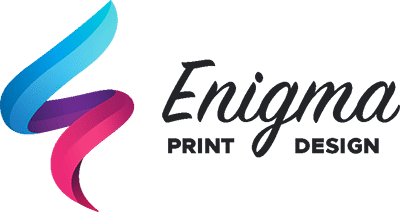The Pros and Cons Of Posters
Poster printing can be a dynamic and versatile form of visual communication that, for decades, has played a huge part in advertising, promoting, and adding aesthetic appeal to spaces. Posters can serve as effective tools for grabbing attention and conveying messages in various settings. Thanks to advancements in printing technology, posters can now be produced with vibrant colours and high-resolution graphics, making them eye-catching and impactful. However, posters can also have limitations, so careful consideration should be made before investing in a poster campaign. Understanding these aspects allows businesses and individuals to harness the power of poster printing effectively in their marketing and promotional endeavours. This article helps guide you through the process.
What is the purpose of a poster?
Before deciding whether a poster campaign is the right form of advertising for you, it might be worth understanding exactly what posters are about. It might feel like it should be obvious, but when you take a minute to break the different forms of promotion and advertising down, it can help you figure out if one or another is what will be most effective for your needs. The purpose of a poster can be loosely broken down as follows:
Advertising and Promotion
Posters are mostly used to advertise products, services, events, or promotions. They serve as visual cues to attract attention and generate interest among potential customers or attendees.
Broadcasting Information – Posters are sometimes used to convey important information or messages to a specific audience. This could include safety instructions, event details, educational content, or public service announcements.
Decoration and Aesthetics – Posters can also be used purely for decorative purposes, adding visual interest and enhancing the ambiance of a space. They can be used in homes, offices, or public areas to create a specific atmosphere or convey a particular theme.
Education and Awareness – Posters play a crucial role in educational settings by presenting information in a visually engaging way. They are used in classrooms, libraries, and educational institutions to reinforce learning concepts, raise awareness about issues, or promote academic events.
Persuasion and Advocacy – Posters are frequently employed as tools for persuasion or advocacy, aiming to influence attitudes, behaviours, or opinions. They can be used in political campaigns, social movements, or public awareness campaigns to rally support for a cause or communicate a particular viewpoint.
A closer look at poster printing
Now that we have a clearer understanding of what the purpose of posters is and what they are most often used for, we can take a more informed look at their pros and cons.
Pros
Budget-friendly – Poster printing is more affordable than other forms of advertising such as billboards or television commercials. It offers a high impact for a relatively low cost, making it accessible to businesses and individuals with challenging budgets.
Pick your size – Posters can be printed in various sizes and formats, allowing for flexibility in design and usage. Whether it’s a small poster for a local event or a large one for a grand opening, poster printing can accommodate a variety of needs.
Distinctive Design – With advancements in printing technology, posters can now be printed with vibrant colours and high-resolution graphics that catch the eye and convey a message effectively. This makes them an excellent tool for grabbing attention in high-traffic areas.
Focused Marketing – Posters can be strategically placed in specific locations to target a particular audience. Whether in a neighbourhood, at a trade show, or on a university campus, posters can reach the desired demographic effectively.
Quick Turnaround – Poster printing can be done relatively quickly compared to other forms of advertising. With modern printing technology, posters can be produced within a short timeframe, allowing for last-minute promotions or announcements.
Cons
Limited Lifespan – Posters, especially those placed outdoors, are exposed to various elements such as sunlight, rain, and wind, which can cause them to fade, tear, or become unreadable over time. This limits how long they last and requires periodic replacement.
Space Limitations – While posters can be effective in certain settings, they also have a confined space for the amount of information they can convey. Due to their size and format, they may not be suitable for detailed messages or extensive content.
Environmental Concerns – Like any form of printing, poster printing has an environmental impact, especially if not done responsibly. The use of paper, ink, and energy in the printing process contributes to resource consumption and waste generation.
Limited Steer – While posters can be strategically placed, they still have limitations in terms of targeting specific demographics. Unlike digital advertising, which allows for precise audience targeting, posters rely on physical placement and may not reach as many potential customers.
Enigma Print and Design – The Poster Printing Professionals
If this article has helped illuminate whether a poster campaign would be the right choice for your advertising needs, get in touch with us at Enigma and we will help guide you through the process. With decades of experience in print advertising, we are on hand to make sure our customers receive the highest quality print products, with the right advice and at the right price.

